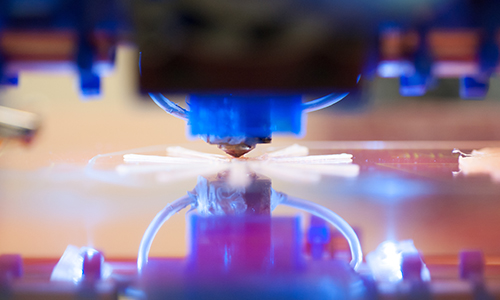3D Printing Goes Legit with FDA Guidance
January 18, 2018
Source: HealthTech Insider
 922
922

In the past two decades, 3D printing progressed from plastic novelties to prototype parts to wide-ranging additive manufacturing applications. Today, for example, GE Aviation is already producing FAA approved parts for aircraft engines. The health and wellness industry already embraces 3D printed tech inside and outside the body. We’ve seen advances in 3D printed cartilage implants, prosthetics, and more. In early December 2017, the U.S. Department of Health and Human Services Food and Drug Administration stepped in with guidance for industry and FDA staff regarding 3D printed medical devices.
Technical Considerations for Additive Manufactured Medical Devices presents exactly what its title denotes: considerations, not rules or laws. Similar to the D.O.T.’s guidance for autonomous vehicles issued last fall, the FDA’s “considerations” are not requirements. The point is further hammered home with the header printed on each page, “Contains Nonbinding Recommendations.” The FDA uses this document type, self-described as “leapfrog guidance,” to share its early reactions and thoughts about emerging technologies. The document further qualifies itself as not addressing point-of-care device manufacturing or biological, cellular, or tissue-based products used or incorporated in additive manufacturing.
The FDA guidance does give potential 3D medical device manufacturers a path to follow to prepare for FDA approval. The guidance focuses on three aspects of 3D printed medical devices: design and manufacturing process; device testing; and labeling. The specific steps combine conventional manufacturing and testing considerations with additional elements relevant to 3D printing.
This document is the FDA’s way of giving a heads up to anyone submitting 3D printed medical devices to the agency for approval. The guidance gives legitimacy to 3D printed medical technology in general and states, in essence, “Based on what we know today, here’s what’s important to us when we consider 3D printed medical devices for approval.” This will give companies one more tool with which to disrupt the status quo in healthcare.
By DduRead more on
- AZ’s Farxiga Gets FDA Priority Review For Heart Failure January 8, 2020
- Global Recall of CyPass Micro-Stent by Alcon September 3, 2018
- Join Drugdu.com’s Online Medical Devices Exhibition to Discover Global Trading Opportunities September 3, 2018
- 3 Ozone Generators for Improved Health August 30, 2018
- Prototype for ‘Bionic Eye’ Created with 3D Printer August 30, 2018
your submission has already been received.
OK
Subscribe
Please enter a valid Email address!
Submit
The most relevant industry news & insight will be sent to you every two weeks.



